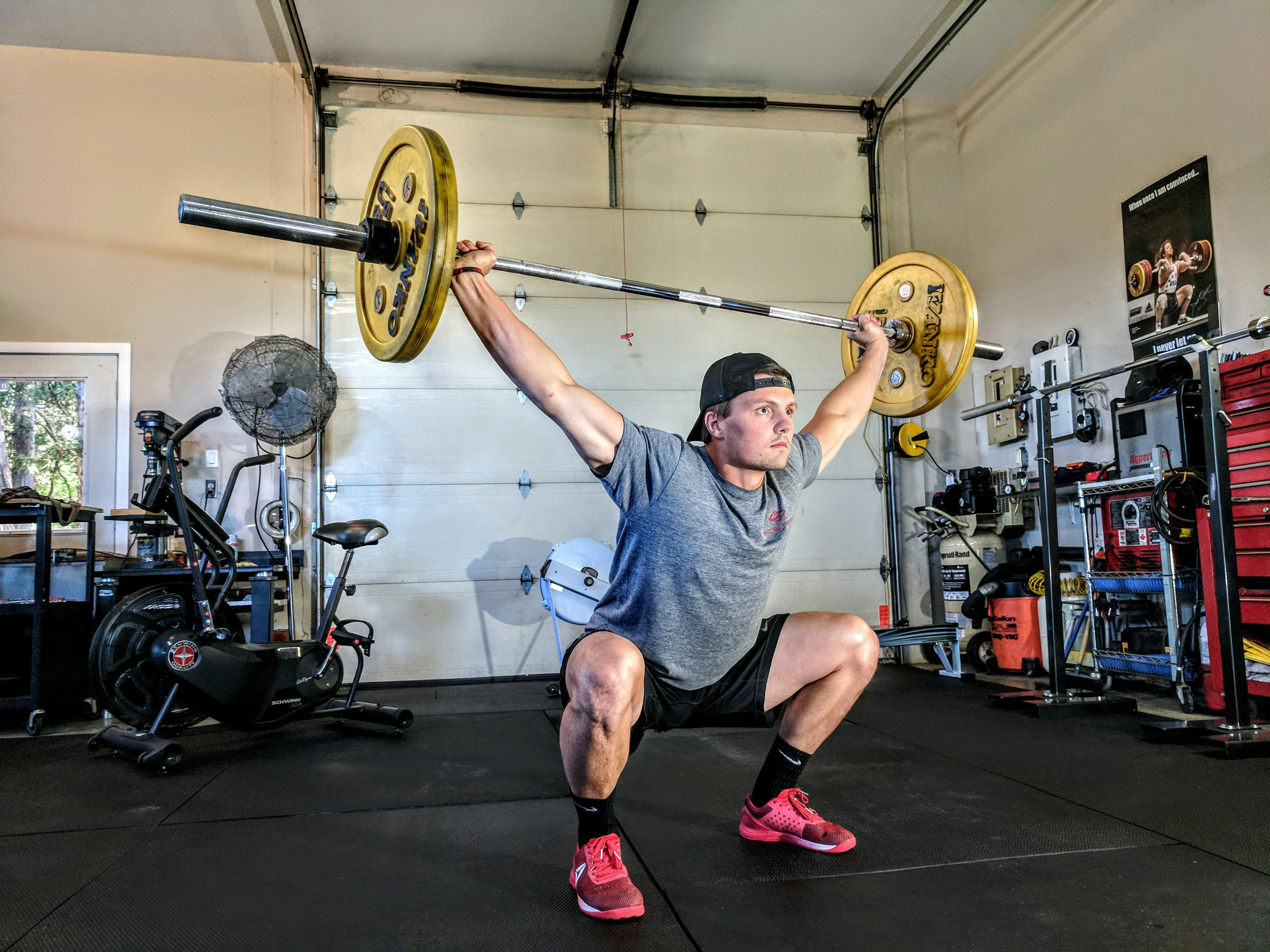Shaping vs. Bulking: How to Adjust Your Training Based on Your Goals

Shaping vs. Bulking: How to Adjust Your Training Based on Your Goals
"Your body can stand almost anything. It’s your mind that you have to convince." – Unknown
Introduction
When it comes to fitness, everyone has different goals. Some individuals are looking to shed fat and sculpt a lean physique, while others want to gain muscle mass and build strength. The two goals — shaping (often referred to as "cutting") and bulking — are often misunderstood as being one and the same, but they require distinct approaches to training and nutrition.
In this article, we’ll dive into the key differences between shaping and bulking, and how you can adjust your training routine to match your specific goals. Whether you're aiming for a lean, toned body or seeking to add muscle size and strength, your training approach will play a crucial role in your success.
1. Shaping: The Goal of Lean Muscle and Fat Loss
What Is Shaping?
Shaping, or "cutting," focuses on reducing body fat while maintaining lean muscle mass. The goal is to reveal muscle definition and improve body composition without losing the muscle you’ve worked hard to build.
Key Principles of Shaping
- Caloric Deficit : To lose fat, you need to be in a caloric deficit, meaning you consume fewer calories than you burn. This forces your body to use stored fat for energy, which leads to fat loss.
- High Reps, Moderate Weight : For shaping, the focus is often on hypertrophy (muscle growth) while burning fat. High-repetition sets with moderate weight are commonly used to enhance muscle definition and endurance.
- Cardio for Fat Loss : In addition to strength training, cardiovascular exercises (such as running, cycling, or HIIT) are typically used to increase calorie expenditure and accelerate fat loss.
- Focus on Nutrition : Protein intake is still important to preserve muscle mass during a caloric deficit, but a moderate amount of carbs and fats is also essential to maintain energy levels during training.
How to Train for Shaping
- Strength Training : Focus on full-body strength training, with an emphasis on compound movements such as squats, deadlifts, bench presses, and pull-ups. These exercises engage multiple muscle groups, helping you build muscle and burn fat efficiently.
- High-Intensity Interval Training (HIIT) : Incorporating HIIT into your routine is highly effective for fat loss and improving cardiovascular fitness. It helps burn fat without sacrificing muscle mass.
- Supersets and Circuits : Supersets and circuit training can keep your heart rate elevated, allowing you to burn more calories and engage multiple muscle groups at once. This method helps with muscle definition and endurance.
Why It Works
When you're shaping your body, the main goal is to reduce excess fat and reveal the muscle underneath. Combining strength training with cardio and maintaining a caloric deficit is an effective way to achieve a lean, toned physique.
2. Bulking: The Goal of Gaining Muscle Mass
What Is Bulking?
Bulking is a process where the goal is to gain muscle mass, often at the expense of some fat gain. The focus is on eating in a caloric surplus, meaning you consume more calories than your body burns, which provides the necessary energy for muscle growth.
Key Principles of Bulking
- Caloric Surplus : To build muscle, you need to be in a caloric surplus. This means eating more calories than you burn, which gives your body the fuel it needs to build new muscle tissue.
- Heavy Weight, Low Reps : For bulking, the focus is on building strength and muscle size, so heavier weights with fewer repetitions (typically in the range of 4-8 reps) are used to stimulate muscle growth.
- Progressive Overload : Progressive overload is key to bulking. This involves gradually increasing the weight you lift, the number of sets, or the intensity of your workouts to continually challenge your muscles and promote growth.
- Protein and Carbs : Protein is essential for muscle repair and growth, but carbohydrates also play a crucial role in providing the energy needed for intense training sessions.
How to Train for Bulking
- Strength Training : Focus on heavy, compound lifts like squats, deadlifts, bench presses, and rows to stimulate muscle growth. These exercises work multiple muscle groups and allow for the greatest amount of weight to be lifted.
- Fewer Cardio Sessions : While cardio can be beneficial for overall health, during a bulking phase, you’ll want to limit cardio sessions to avoid burning too many calories, which could hinder muscle growth. A couple of short, moderate-intensity sessions each week should suffice.
- Focus on Lower Reps and Higher Weights : For building muscle, focus on lifting heavier weights with lower reps. Aim for 4-8 reps per set for maximum hypertrophy.
Why It Works
Bulking works by creating a surplus of energy that allows your body to build muscle. By lifting heavy weights and eating more calories, your body has the necessary nutrients to repair and grow muscle fibers, leading to muscle hypertrophy and overall size.
3. Key Differences Between Shaping and Bulking
1. Goal Focus
- Shaping : Fat loss and muscle definition are the primary goals, with an emphasis on achieving a lean physique.
- Bulking : The goal is to increase muscle mass and strength, often at the expense of some fat gain.
2. Caloric Intake
- Shaping : A caloric deficit is required for fat loss.
- Bulking : A caloric surplus is necessary to support muscle growth.
3. Training Style
- Shaping : Focus on high reps with moderate weight, often combined with cardio to promote fat loss.
- Bulking : Focus on heavy weights with lower reps, with minimal cardio to preserve calories for muscle growth.
4. Nutritional Approach
- Shaping : High protein intake to maintain muscle mass during fat loss, with moderate carbs and fats for energy.
- Bulking : High protein to support muscle growth, with increased carbs to fuel workouts and support the caloric surplus.
4. Can You Combine Shaping and Bulking?
Why It’s Challenging
Since shaping and bulking involve different goals — fat loss versus muscle gain — they require distinct approaches in terms of diet, exercise, and overall strategy. However, it is possible to blend the two goals to some extent, especially during transitional phases like a “recomp” (body recomposition), where you focus on losing fat while building muscle at the same time.
How to Do It
- Adjust Your Diet : You can adjust your macronutrient intake to create a slight surplus of calories on training days for muscle growth, while maintaining a caloric deficit on rest days to promote fat loss.
- Train Smart : Incorporate strength training for muscle growth, but also include some cardio to help burn fat. Focus on progressive overload while managing your caloric intake carefully to prevent excessive fat gain.
Why It Works
Body recomposition is difficult but possible, especially if you are a beginner or returning to training after a long break. A well-planned diet and training program can help you simultaneously lose fat and gain muscle, although the process is typically slower than focusing solely on one goal.
5. Tips for Switching Between Shaping and Bulking Phases
Transitioning Between Phases
- From Shaping to Bulking : Gradually increase your caloric intake over a few weeks to avoid excessive fat gain. Focus on strength training and progressively heavier weights.
- From Bulking to Shaping : Begin by reducing your calorie intake gradually, focusing on maintaining strength while incorporating more cardio to burn fat.
Key Considerations
- Patience Is Key : Whether you’re shaping or bulking, the process takes time. It’s important to stay consistent with your training and nutrition.
- Listen to Your Body : Pay attention to how your body responds to changes in diet and exercise. Adjust your training and nutrition accordingly to avoid unnecessary fat gain or muscle loss.
Conclusion
Shaping and bulking are two distinct fitness goals that require different approaches to training, nutrition, and lifestyle. While shaping focuses on reducing body fat and toning muscles, bulking is centered around increasing muscle mass and strength. By understanding the differences between these two goals, you can tailor your training to achieve the body you desire. Whether you're focused on getting lean or building mass, the right combination of diet, exercise, and mindset will help you reach your fitness objectives.
References
- Schoenfeld, B. J. (2010). Squatting and hypertrophy: What is the relationship? . Journal of Strength and Conditioning Research.
- Helms, E. R., Zourdos, M. C., & Brown, E. (2015). Scientific principles of strength training . Journal of Strength and Conditioning Research.
- Phillips, S. M. (2014). A brief review of critical processes in muscle hypertrophy . Journal of Strength and Conditioning Research.




